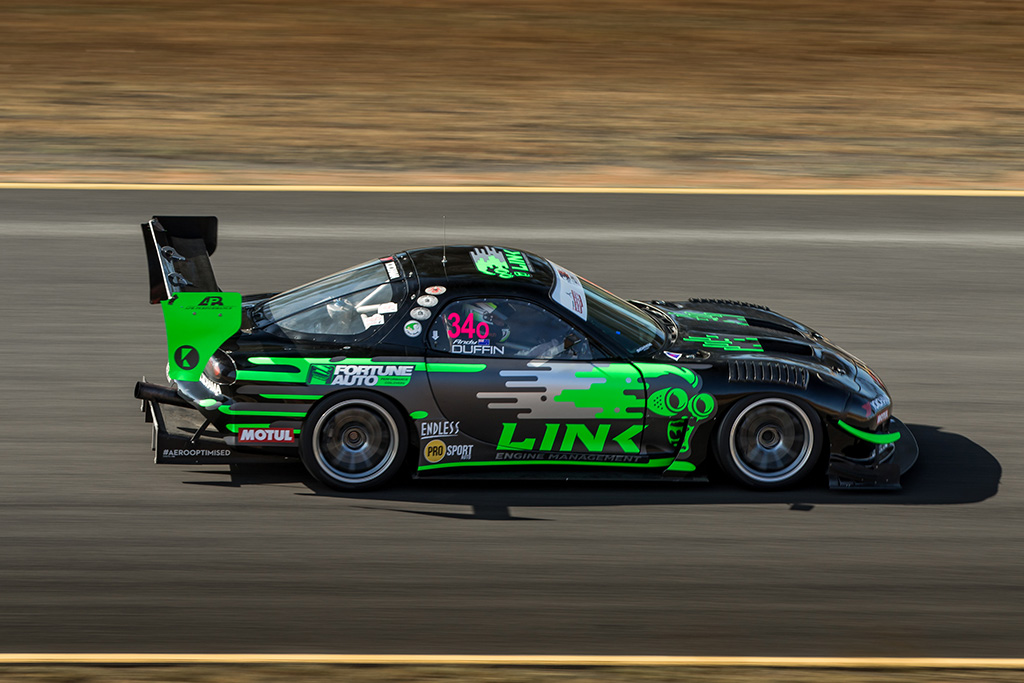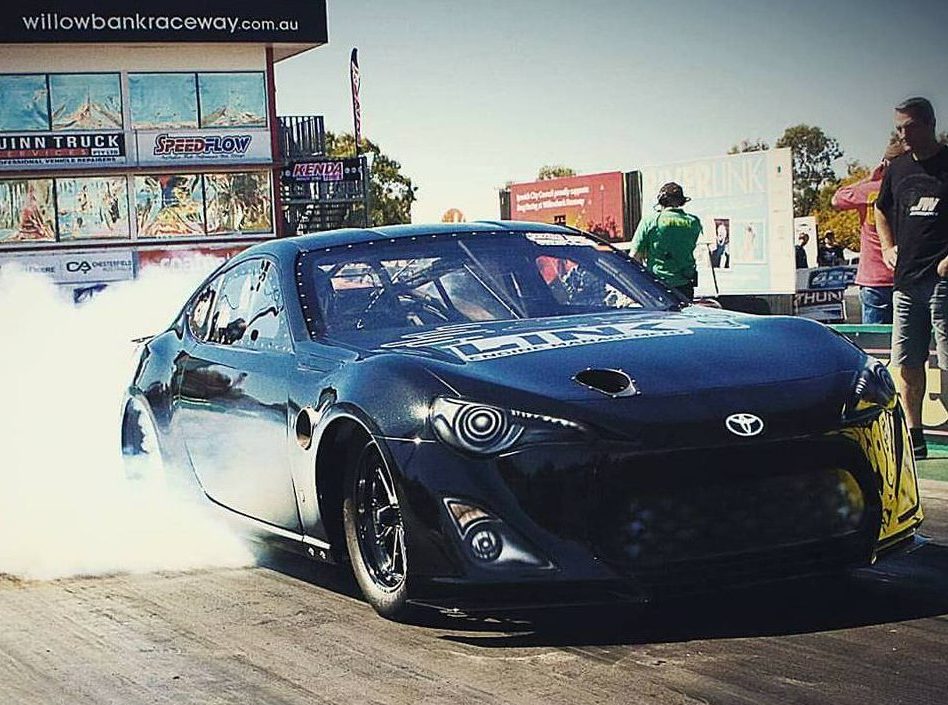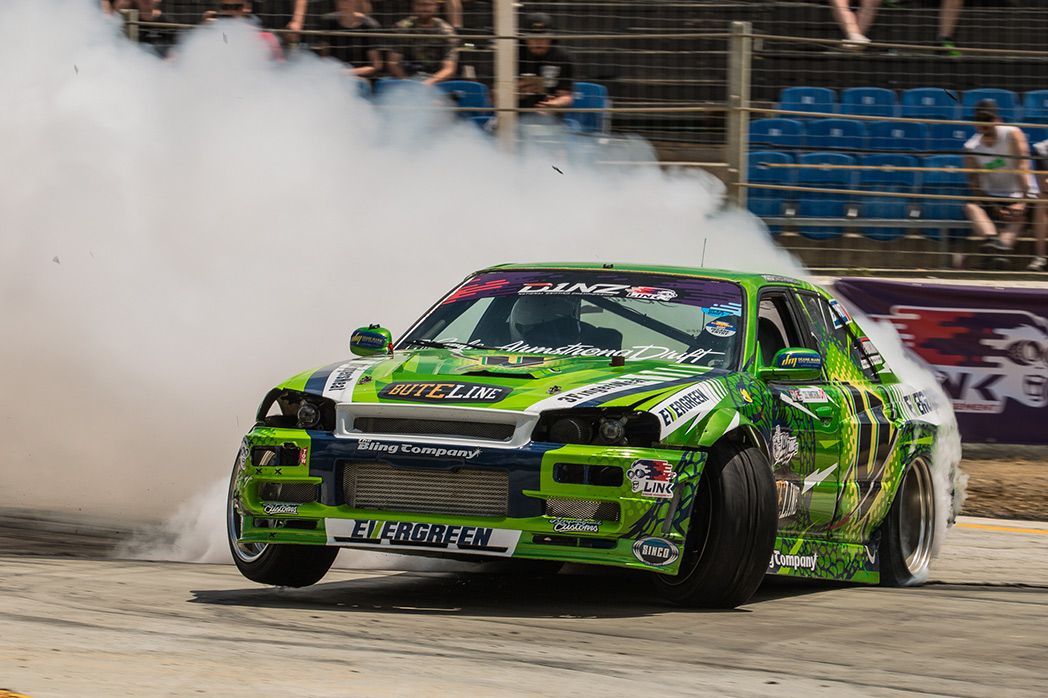Motorsport features
Motorsport features
All Link ECU’s host a huge array of features and inputs. Selecting which of these are important to your build should be one of the first steps before deciding which ECU to purchase. With competition in mind, some of the following motorsport-specific features could be vital for you.
Traction control

Traction control helps limit tire slip in acceleration on slippery surfaces. Traditionally, drivers have had to feather the gas pedal to prevent the drive wheels from spinning wildly on slippery pavement or under extremely heavy acceleration. Aftermarket ECU’s however, can be programmed to control / limit power delivery for the driver, eliminating wheel slip and helping the vehicle drive forwards when the throttle is open.
Traction control is activated when throttle input and engine torque are mismatched to road surface conditions.
‘TC’ intervention consists of one or more of the following:
- Reduction or suppression of spark sequence to one or more cylinders
- Reduction of fuel supply to one or more cylinders
- Closing the throttle, if the vehicle is fitted with drive by wire throttle
- In turbocharged vehicles, a boost control solenoid is actuated to reduce boost and therefore engine power.
An experienced Link ECU tuner will be able to assist you in implementing one, or all, of these functions to give your vehicle the traction it needs in varying surface conditions.
Launch control
Eliminating wheel spin and wheel hop, maximizing traction and power off the line, and building boost before launch in a forced induction car are all critical components in the launch of any vehicle.
When using launch control the user defines a “launch rpm” that, when launch control is activated, the vehicle will maintain. This allows the user to hold the car at full throttle while still maintaining a suitable RPM for launch, based on vehicle capabilities, traction, wheel hop, etc.
Turbocharged cars also see an additional benefit of launch control in the ability to build boost before the vehicle leaves the line.
These capabilities lead to smoother, consistent and reliable launches with maximum power from the moment you leave the line.
If you want more consistent launches without wheel spin, or have a boosted car and you wish to build boost before you take off for more powerful launches, then launch control would be very useful for you.
Gear shift control

This ensures the fastest possible shifting without risking damage to your gearbox. When set up correctly, it allows the driver to change gear without taking their foot off the accelerator. The gear cut system will support simple ‘timed’ gear change ignition cut control, for clutchless shifting in a dog engagement gearbox, as well as full closed loop gear cut control for sequential gearboxes using a gear position sensor. Gear shift requests can come from digital switches (such as a paddle shift system), digital gear levers, or strain gauge gear levers. Down-shift throttle blipping can also be incorporated either via e-throttle directly, or via a blip solenoid.
Anti Lag
Anti Lag is available on all our ECU’s with the exception of the Atom – Implemented in rally, drag and drift. This feature is used on turbocharged engines to minimize turbo lag. It keeps the turbo spooled up while the throttle is not open, so you don’t lose boost pressure. Loud pops and flames can occur when fuel and air in the exhaust is ignited before the turbo, to keep the turbo spinning when the engine is not delivering enough exhaust gas.
As mentioned, anti-lag is commonly used on rally cars and other turbo-charged race cars. It greatly reduces the lifespan of the turbo but is beneficial in creating boost and can cause a loud, fire-spitting car.
Data logging
Log files from track or dyno sessions can be downloaded and managed through the Log File Manager in PC Link. This analytical data is extremely useful for competition, allowing the driver to focus on driving while in the car, then engineers can later obtain feedback from the engine without relying exclusively on driver feedback. Max RPM, lambda, ignition timing and speed are parameters commonly analyzed from the data files.
Other features possible with Link ECU include:
- Progressive cut control
- Selectable fuel or ignition limiting
- Selectable cut effect (adaptive or constant)
- Adjustable control range
- Vehicle speed controlled
- Clutch switch controlled
- Launch fuel trim (3D)
- Launch ignition trim (3D)
- Various activation methods
- Adjustable logging rate
- 4Mbit Onboard Logging
- Log analysis with PCLink
- Boost control
- Open and Closed loop control
- Multiple tables (3D)
- Engine temperature trim
- Inlet air temperature trim
- Gear based trim
- External adjustment (high/low switch)
- Pitlane speed limiter

The product page of each Link G4X ECU lists the features available to make selecting the appropriate ECU for your application easier. For more tuning advice to make the most out of these features in your car, contact an authorized Link ECU dealer.
